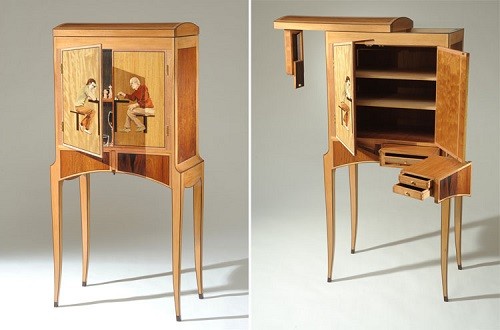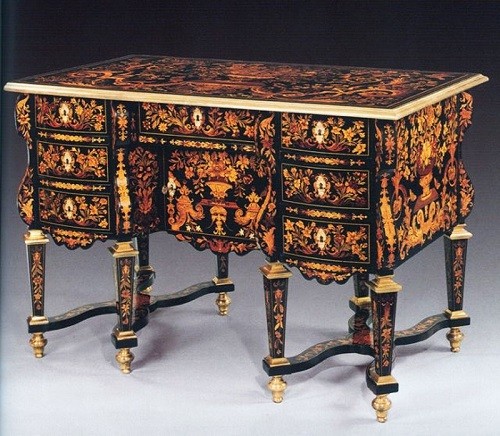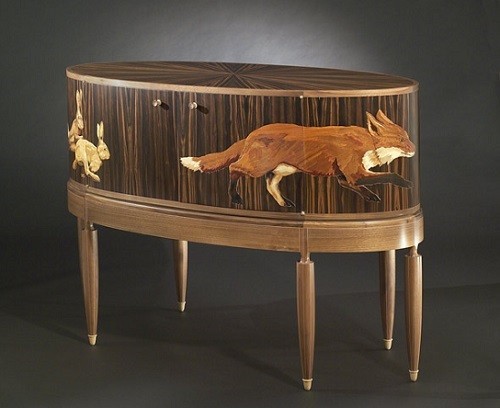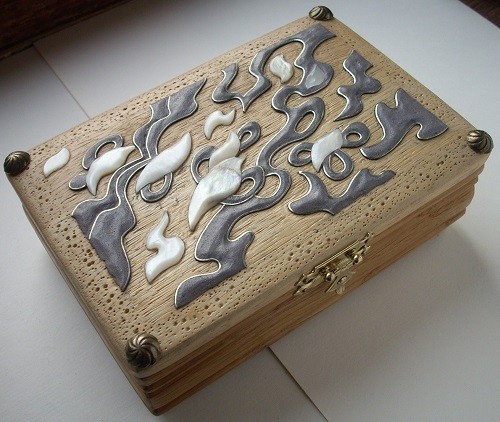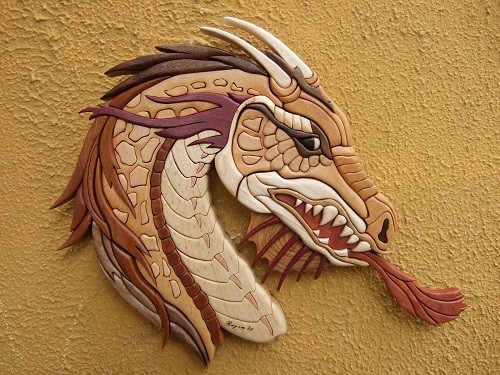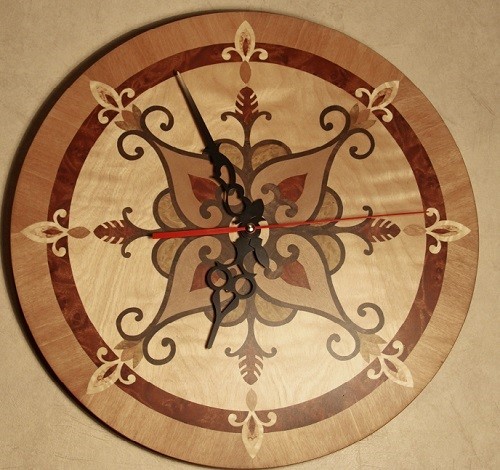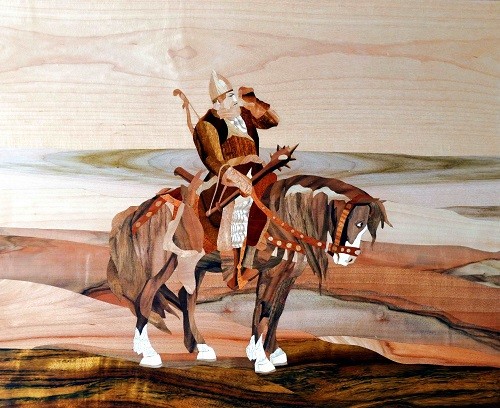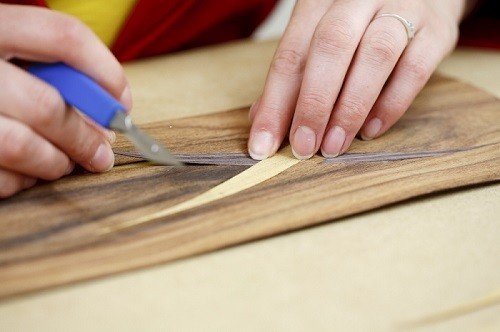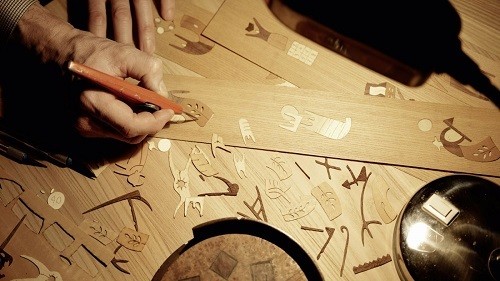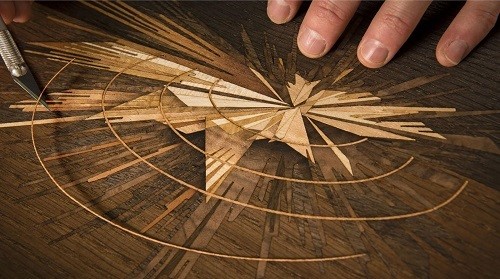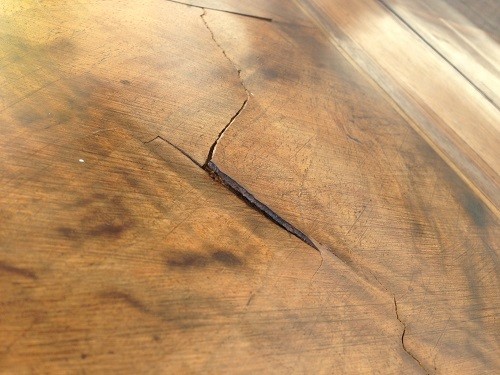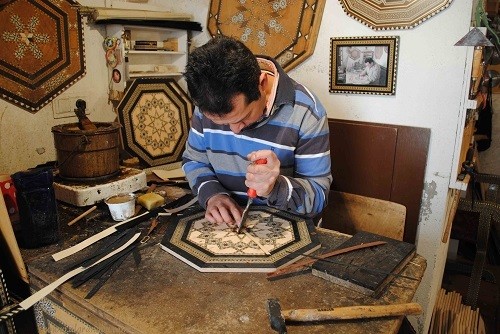
Wooden Mosaic (Marquetry): Features, Production, Photo Interior items
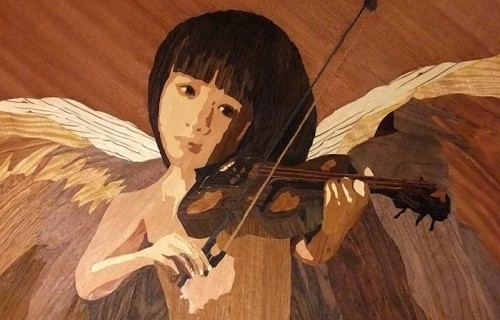
Tree in the interior - out of time. Whatever the fashion, what novelties did not make up designers, the strict beauty of decorative wooden elements is always relevant. This is the most demanded material in the ceiling, walls, floors, furniture and decor items. Unprecedented popularity today acquired Marketer's technique. What it is, the article will tell.
Content
Translated from the French "marqueterie" means "mosaic". The essence of technology consists in collecting thin plates from elite wood species and gluing them on a simple wooden base (birch, oak) as an ornament or curly composition. The thickness of the plates ranges from 1 to 3 mm, they attract the attention of a variety of colors and texture. Each composition made in this original technique is noteworthy of its multipleness: if you look at the image at different angles, it seems to be holography, each time reveals a new "picture" before the viewer.
Tree mosaic: yesterday and today
The first round of the unprecedented popularity of Marquetry fell on the era of Renaissance: it was then that the machine was assembled to create a sawn veneer - thin slats from valuable wood wood. The curly and ornamental mosaic of the vessels was "crawling" on table tops, door beds and cabinets, headboats and wall-mounted stained glass faces. Moreover, in the style of marketer with fantastic transmission of volume, light and shadow, skillful masters performed promising views of urban streets and squares. There was about hundreds of types of black, red, pink, violent and lemon tree at the disposal of the cabin directors of that time.
From the modern workflow, the creation of a mosaic in the past differed a little: curly pieces of wood were burned down, then attached to them with a shade, etched with acid to expand the color palette, applied engraving to focus on any details.
Today, a wooden mosaic is back in Favor. Modern connoisseurs of comfort and luxury could not resist the lively depth and naturalness of noble stained glass wood. In the design of the interior, Marquetry can be seen on the ceiling, in the deepening of all sorts of niches, on the door canvases and room partitions. Icons, boxes, clocks and other decor elements also become a comfortable working field for creating amazing compositions made of wooden veneer.
Marketer sometimes mistakenly confused with inlay and intarsia, which are actually independent art types. If we talk about the degree of complexity, the instructional performance of the marketer is easier than the specifics of work in the aforementioned techniques.
Inlaid is the decoration of the product with a composition of valuable materials (pearl, semi-precious and gems, metal and wood) by cutting into the thickness of the product surface.
Intarsia is the embedding of wooden elements into a wooden surface to create a figurative image or ornament.
The art of Marketer, whose photo is presented below, differs from other types of wood grace and refinement.
How to create marketer
A sketch of the picture that the specialist decided to embody in the mosaic is transferred to millimeter paper. The master is then determined with the color range and paints the image with watercolor paints in accordance with the idea.
A dense cardboard serves as material for templates that are cut and applied to the veneer, rub the contour of the pencil. Wooden fragments are cut with a special sharply sharpened knife, cutter or jigsaw.
All elements of one drawing are glued to the template with carpentry glue, trying to fit them as tightly to each other. Even very small gaps between figure veneer pieces are unacceptable! Also, the pieces of wood may not be glued to the paper base, but to combine them with scotch. Such a reception enjoy the masters with experience.
The finished set of pieces of wood is turned over with paper or scotch upwards and, using a special dispersion, is glued to the basis of which plywood or organite serves. After the surplus glue was washed away, the work is placed under the press at least 4 hours. During this time, the product finally dries.
The next stage is the work with the facial part of Marquetry. Paper is carefully removed by large sandpaper, and the tape is simply dug. The finished image is grin and covered with varnish at least three times. Then the wooden mosaic is polished.
So that the image performed in the Marquetry technique looked most effectively, the professional uses a large amount of diverse wood. Very often use the combination of Karelian birch, pears, mahogany and several walnut species. Particularly carefully belongs to curly elements made of wood with different defects and an unusual texture - the finished composition they give a special charm and uniqueness.
Not always the creator of Marquetry arrange colors and shades of pieces of veneer that he has. Then professional professionals come out of the predicament as follows: Wooden plates are rushing with various acids. Thus, the solution of iron chloride stains wood in a light blue or light green color, and those pieces that were soaked in copper vitrior or glandular potassium acquire red.
Wooden mosaic set options
For the long ages of the existence of Marquetry Masters-Krasniders, many ways to create a mosaic of this species were invented. List some of them.
Reverse paper set
A sheet of paper on which the sketch of the future image is applied to the board. The necessary curly elements are cut out of the wood and proceed to work. The starting point of the set becomes the left upper corner of the composition. On the front side of each part with a small soft bruster, glutin glutin glitin glitter and glue a veneer pieces on paper according to the sketch. During the work, the master is trying to fit the mosaic elements to each other as close as possible, checking the quality of work on the light. This is the easiest way to set, but there are often lumens between the joints of the parts, which should not be ideally.
Set on the principle of mosaic
The finished layout is cut into the details and transfer them to thin wooden sheets (veneer). First, they gain the main elements that serve as the main background, then cut smaller details. When all the elements are drinking, they are applied to a paper mosquito in the form of a mosaic, fastening with a tape from the front side. In the course of work, they try to avoid gaps, lumen and cracks on wood, and the tape is glued extremely careful - shifts and wrinkles on its surface are not allowed.
Set in paper
First, on dense Watman, the fine contours of the elements are clearly drawn, and then putting a knife into a vertical position, cut out one part to attach it to the veneer. The dropped paper element on a wooden sheet thoroughly rub the knife along the contour: this is how the item is obtained, which is not more accurate to fit into the groove. It is glued with paper tape from the opposite side to the neighboring, adjacent with it, elements. In the same way, all the elements are cut out, along their contour - wooden parts, which are then pasted on Watman. So the paper layout is gradually replaced by a veneer set without intervals and overlap.
Set in veneer
On the wooden base through the copy paper, the drawing is transferred and cut the parts along the contour in the veneer. Then from the wooden raw materials of another species make the necessary inserts to fill the niches on the background board. Between themselves, elements are combined with paper scotch.
Technique Bul
The method was named after the French furniture maker André-Charles Boulle, who, during the formation of marquetry as an independent art made a great contribution to its development. If necessary, get two identical ornamental set the background image and work simultaneously. Two wooden webs (one background, other compositions for producing fragments) is adhered to the heavy paper is folded together, fastened together in several places special adhesive dispersion. On top wooden sheet conceived transferred image and all of its elements cut out the contour of the cutting tool. When the wooden sheets are disconnected from each other, comes from two niches and two connectors for two opposite sets of color solution.
Features Recovery marquetry
Mosaic set needs to rebuild when:
- its structure weakened over time;
- it is very dirty;
- spoiled its finish coating;
- some elements cracked or warped;
- individual elements were peeled off;
- scratches, dents or weirs spoil the overall appearance of the image.
Restoration of a wooden puzzle made on the principles of recovery of veneered furniture, because of their character defects is the same. So, if a magnificent view of marquetry spoil superficial scratches, flaking or dents, but the integrity of the product is not in doubt, the work on the restoration of normal veneer surface technology.
Initially reinforce fragments that may soon come off: remove them from the base, purified wood element and its niche, and then inserted back, securing it with tape or gummed pressing device. The next stage - the removal of surface contaminants, traces of the adhesive dispersion. Small cracks and surface defects veneer camouflage with mastic. The final touch - a refreshing old varnish layer: it toned and give a glossy shine with the help of shellac polishes.
More painstaking work involved in the master if the individual elements of the mosaic lost, corrupted and, worst of all, poorly restored earlier. Then most of the work is preceded by the drafting of the restoration, which should be approved in the Restoration Council.
Lost embedded elements are restored along the outlines of empty niches. Also, the absence of fragments are filled, copying similar elements on the surviving site of the same composition. A pattern is cut out from thick paper, on the basis of which the insertion of the tree is made. The veneer for the creation of missing fragments is selected with special care - by the breed, natural shade and direction of fibers. Freshly prepared inserts are glued by the press with clamps.
Perhaps the only drawback of Marquetry is high cost. Whatever fashionable wooden mosaic, not everyone can buy it. This is explained by the fact that such work with a tree wears a truly jewelry character, which means it is estimated very expensive.




